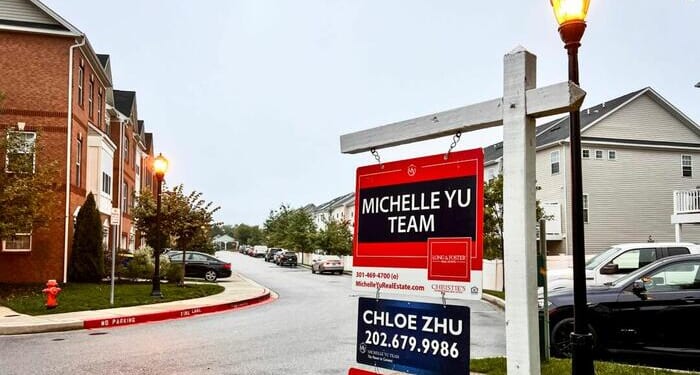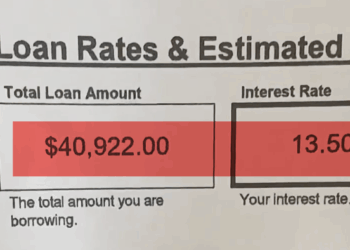Authored by Tom Ozimek via The Epoch Times (emphasis ours),
A new report from the Intercontinental Exchange shows that nearly 875,000 homeowners now owe more on their mortgages than their properties are worth—the highest level in three years—as softening home prices and elevated borrowing costs squeeze household finances.

The surge in negative equity represents 1.6 percent of all mortgage holders and highlights a worsening affordability landscape that officials in the Trump administration say is weighing on the broader economy.
While the jump is notable, the Intercontinental Exchange said in the Nov. 10 report, the overall share of underwater loans remains comparable to long-term averages prior to the pandemic housing boom, with the exception of the Great Recession. Still, the company warned that certain markets are seeing concentrated pockets of borrower vulnerability as prices continue to retreat from their post-COVID peaks.
“While overall negative equity rates remain low, certain markets are showing signs of concern, particularly in the Gulf Coast of Florida and Austin, Texas,” the report noted.
In Cape Coral, Florida, for example, where home prices are down 15 percent from their peak, 11 percent of mortgages are underwater, including more than one-third of those that originated between 2023 and 2024, when rates were highest.
The rise in negative equity is concentrated among recent, lower-down-payment borrowers, particularly those with Federal Housing Administration (FHA) and Veterans Affairs (VA) loans issued in 2023 and 2024.
In some VA cohorts, more than 20 percent of borrowers are now underwater, the Intercontinental Exchange said—a reflection of both local price declines and the fact that these newer borrowers never benefited from the pandemic-era equity cushions that protected earlier buyers.
Another 6.9 percent of mortgage holders have less than 10 percent equity remaining, the highest share since mid-2020. While the Intercontinental Exchange noted that the figure remains below long-term averages, low-equity borrowers are typically more vulnerable to credit stress if home prices continue to fall.
At the same time, the report struck a more positive tone on the outlook for refinancing and equity access as borrowing costs begin to ease.
The Intercontinental Exchange said falling mortgage rates have “significantly expanded” the number of homeowners who could lower their monthly payments, while also reducing the cost of tapping home equity.
“The recent easing in mortgage rates has begun to open the refinance window for many borrowers, particularly those who originated loans in the past two years,” Andy Walden, head of Mortgage and Housing Market Research at the Intercontinental Exchange, said in a statement.
The Intercontinental Exchange’s data show the number of highly qualified refinance candidates—those with strong credit, at least 20 percent equity, and potential savings of 75 basis points or more—rose to 1.7 million in late October, the largest since early 2022.
Including broader borrower profiles, approximately 4.1 million mortgage holders are currently “in the money” to refinance, a figure that could approach 5 million if rates drift slightly lower.
Housing in ‘Recession,’ Treasury Secretary Warns
The equity deterioration comes amid growing concern inside the Trump administration that high mortgage rates are dragging the housing sector into a downturn.
Treasury Secretary Scott Bessent said in a recent interview on CNN that parts of the economy “are in recession,” in particular housing, and that high borrowing costs are hitting low-income Americans the hardest.
“We have seen the biggest hindrance for housing here that are mortgage rates,” Bessent said. “So, if the Fed brings down mortgage rates, then they can end this housing recession.”
Bessent echoed warnings from Federal Reserve board member Stephen Miran, who told The New York Times in an earlier interview that keeping monetary policy “this tight for a long period of time” risks inducing a recession. Miran said he sees no reason for the central bank to delay further rate cuts with inflation cooling.
Borrowers Under Strain as Credit Stress Mounts
Beyond housing, other consumer-credit segments are flashing warning signs. Subprime auto-loan delinquencies hit 6.65 percent in October—the highest level on record since the early 1990s—according to Fitch Ratings. Two major auto-finance firms serving low-income borrowers filed for bankruptcy this fall.
Foreclosure activity is also creeping higher. More than 101,000 properties received filings in the third quarter, up 17 percent from a year earlier, according to ATTOM.
Mortgage delinquencies—while still low by historical standards—have also begun to rise from last year’s trough, according to data from VantageScore and the Federal Reserve Bank of New York.
Reuters and Naveen Athrapully contributed to this report.
Loading recommendations…

















